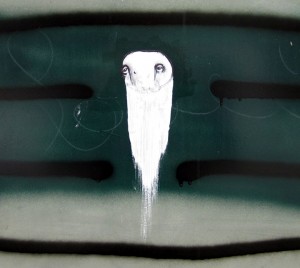Conceptual art contains a well thought out reasoning for the creation of a piece. Emphasis is put on the meaning, rather than solely on the visual experience. Dali described the psychological findings of Freud through symbolism and Duchamp challenged the traditional notion of art. Rothko simplified canvases to solid planes  of color and Rauschenberg presented the creation of art while erasing art. In these cases, the art lies in the idea; the visual elements are vehicles used to transfer a conceptual meaning.
of color and Rauschenberg presented the creation of art while erasing art. In these cases, the art lies in the idea; the visual elements are vehicles used to transfer a conceptual meaning.
Other artists created with a primary focus on visual aesthetics. These pieces are broken down and defined using the elements of art: line, shape and form, texture, color, composition and space. A visual journey is the goal of the artist. The artist creates a path for the viewer’s eyes following lines, symmetry and color domination. The success of the piece depends on the harmony of these visual elements, not on symbolism or conceptual theories.
Other pieces use the elements of art to help strengthen an underlying message. The direction and placement of lines can dictate the feel of a piece. Vertical lines represent height or a heavenly path. Diagonal lines convey a feeling of movement. Contrasting colors create a sense of tension.
Art attempts to ignite a conceptual or visual analysis. Some pieces serve as a vehicle to transfer ideas. The visual elements are less important compared to the underlying message. Other pieces stress the successful harmony of the elements of art through a strict visual experience.
Do you feel the above piece was created as a visual experience? Conceptual? What is your interpretation?
think of color combination, line, symbolism, symmetry!









Recent Comments